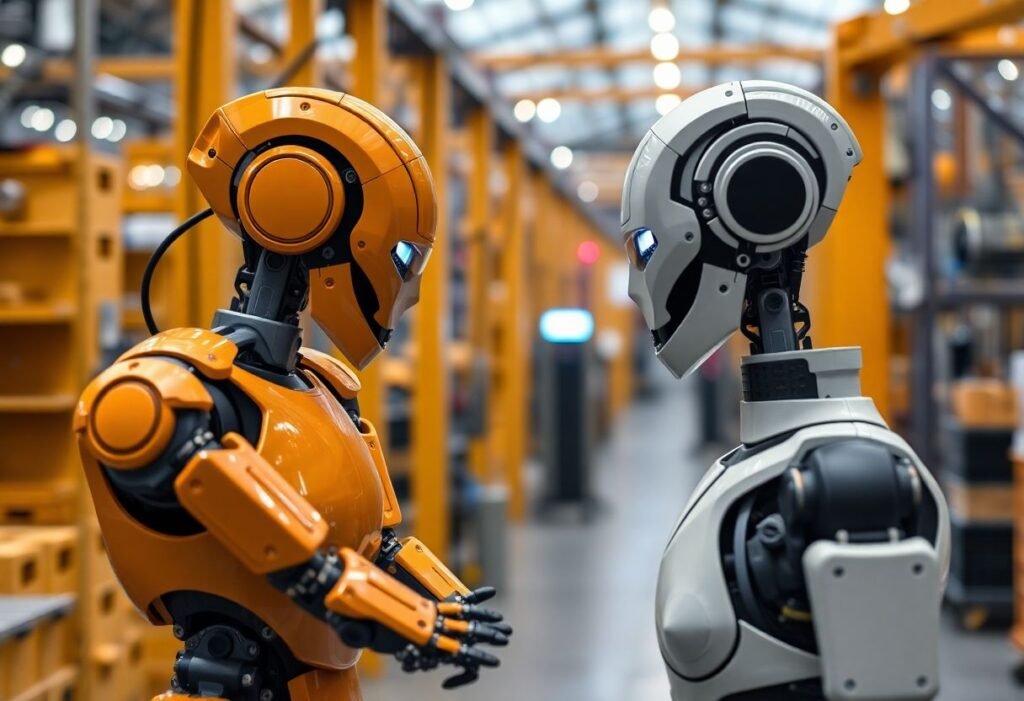The future of collaborative robots, often known as cobots, represents a significant leap forward in industrial innovation. These machines are designed to work alongside humans, enhancing productivity and safety across various sectors. As industries evolve, so too does the technology that supports them, making collaborative robots a key focus in the drive for efficiency and innovation.
The Role of Collaborative Robots in Modern Industry
Collaborative robots are revolutionizing how industries operate. Unlike traditional robots that operate in isolation, cobots are specifically designed to work alongside human operators. This integration fundamentally alters workflow and productivity. Industries like manufacturing, healthcare, and logistics are seeing dramatic changes as these robots take on repetitive and strenuous tasks, allowing human workers to focus on more complex responsibilities. By enhancing human capabilities, cobots not only improve efficiency but also pave the way for innovative processes that were previously impossible.
Technological Innovations Driving Cobot Development
The rapid advancement of technology is a cornerstone of collaborative robot development. Innovations in artificial intelligence (AI), machine learning, and robotics hardware are improving how cobots perceive their environments and interact with people. For instance, advancements in computer vision enable cobots to better understand and react to their surroundings, enhancing safety and efficiency. Moreover, **modular** designs allow for easy upgrading and integration with existing machinery, catering to the evolving needs of industries. As technology continues to evolve, so will the capabilities of collaborative robots, ensuring they remain at the forefront of industrial innovation.
Increased Safety with Collaborative Robots
Safety is paramount in industrial settings, and collaborative robots are designed with this in mind. Equipped with advanced sensors, these robots can detect human presence and react accordingly to avoid accidents. They often come with built-in safety features that allow them to operate at lower speeds in the presence of humans. This combination of enhanced security and productivity is attracting more industries to adopt cobots. The reduction in workplace injuries not only improves employee well-being but also decreases downtime and associated costs, showcasing the economic benefits of investing in collaborative robots.
Collaboration Versus Automation: Finding the Balance
As industries aim for higher productivity, a question often arises about the balance between full automation and collaborative robots. While automation can significantly enhance output, it tends to lack the flexibility and adaptability that cobots offer. Collaborative robots are particularly advantageous in dynamic environments where processes change frequently. This adaptability allows companies to pivot quickly in response to market demands without requiring complete overhauls of their systems. As such, merging human and robot workflows creates a more agile and responsive production environment.
The Future Landscape of Collaborative Robotics
Looking ahead, the landscape of collaborative robotics can expect continued growth and innovation. With technological advancements, industries are eager to explore artificial intelligence, enhancing human-robot collaboration. The increasing adoption of Industry 4.0 principles further supports this trend, pushing the boundaries of traditional workflows. Manufacturers are set to see enhancements in efficiency and productivity, reinforcing the critical role of cobots as partners in shaping the future of industries.
Conclusion: Embracing Change with Innovation
The journey into the future with collaborative robots is one of embracing change and innovation. Understanding their importance not only enhances productivity but also fosters an environment where human and machine innovation can coexist. By investing in these technologies and continuous development, industries can ensure a significant competitive edge. Collaborative robots are not merely an addition to the factory floor; they represent a fundamental change in how work is performed in the age of innovation.
Disclaimer: This article is for informational purposes and does not constitute professional advice on robotics or industry innovations.





















